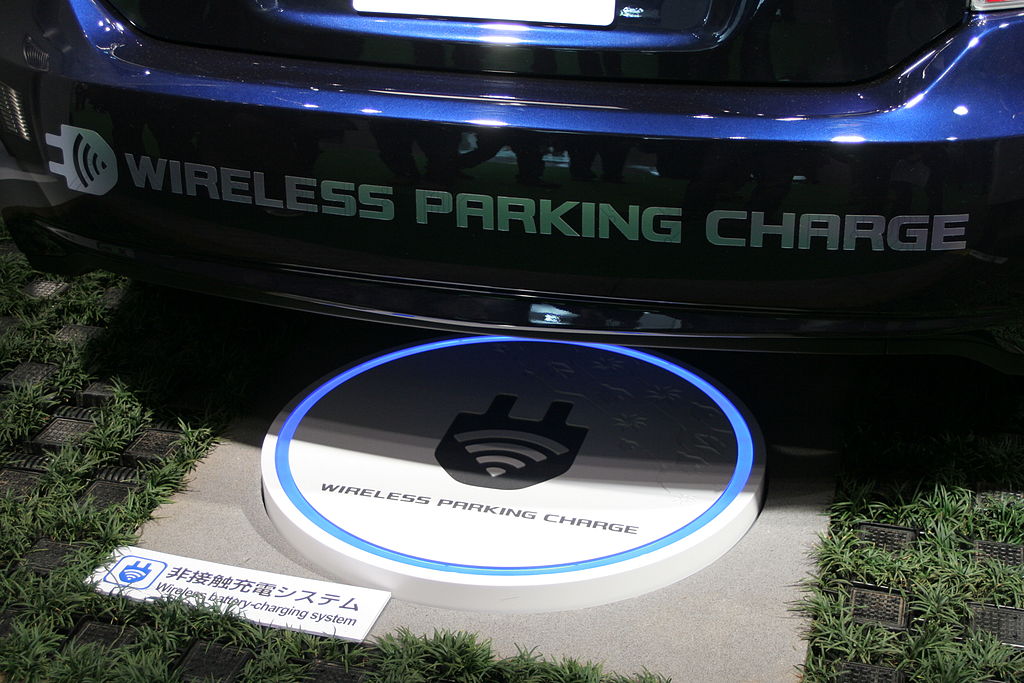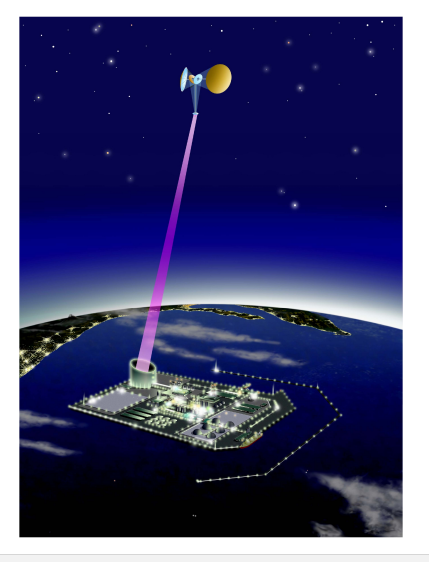The Wireless Power Transfer: The Future of Electricity
In school, there was this fascinating fellow we had as a classmate. He was a bit weird which was not so much of a problem considering all of us have a bit of weirdness in us. But he was a creative soul who keeps coming up with new concepts of doing things. He just does not dream of it. He produces prototypes and drawings of it. His first project was to build a perpetual motion machine. Just like the name, a machine that was supposed to run forever (perpetually). It was supposed to negate the fundamental laws of physics especially the first law of thermodynamics; energy cannot be created or destroyed. The machine is supposed to have zero losses which are impossible on a moving machine. Well, if you would like to know more about people who have "built" a perpetual motion machine, you may have to head over here.
He usually is quite a character, but one day he wanted to do away with wires in the transmission of electricity.

Wikipedia Creative Commons: Car Wireless Charging Dock
Imagine all the cables you see overhead walking along the road gone. Yes, gone like the wind. He proposed a plan and drew it up. The idea he thought up was so good he got invited to South Africa on an all-expense paid trip to present his findings to the Institute of Electrical and Electronics Engineers (IEEE).
Many still regarded him as the dude with "crazy dreams." But he was not to be deterred. But what if he was right?
In 2014, Hiroshi Amano, a Japanese Professor, a physicist and inventor won a Nobel prize in physics for his work in developing a remote transmission of electricity using electromagnetic waves.
The idea to transmit electricity wirelessly is not something new. Currently, there is wireless power transfer of electricity, but they are usually for low power devices such a mobile wireless chargers that allows charging over short distances, and not efficient.
How the Proposed System Works
The electric power is converted into high-frequency electromagnetic waves which are then transmitted to the location where it is needed using an antenna. A receiving antenna gets the power sent and transformed it into electricity.
There are two antennas, one converts the electricy into electromagnetic waves and transfers.
A recieving antenna receives this em waves and converts it back to electricty. The only medium between these two antennas is air; so, wires are eliminated.In theory wireless transmission of electricity as of today is attainable. The only problem is the power lost in between transmission and reception. But the Nobel prize winner successfully developed an improved version of a power semiconductor that has an incredible voltage and current regulating ability, a property that would reduce the current losses experienced in the attempt to transmit electricity wirelessly.
Far-field Energy Transfer
Past attempt to transfer energy to distant places requires a far-field radiative electromagnetic wave. Using a microwave of about 1GHz frequency electric energy is transferred via electromagnetic waves via a dish-like antenna.
But due to diffraction, the bending of electromagnetic waves when it encounters an obstacle, the antennas needed are correspondingly large (several meters to km in size) to achieve enough directionality.
Applications
But leveraging on the NASA's advanced technology where conversion of energy into laser beams. It has the edge over the radio and microwaves method of transfer as there is no interference with WiFi and radio, cell towers, TVs, etc
.png)
Source: Japanese Space Agency (JAXA) proposed laser technology (solar power satellites) using direct solar capable of delivering 1GW
The application of such a venture would be massive. For instance, imagine transmitting some solar power from space back to the earth. Imagine the enormous expense saved when such technology is finally deployed.
Its application in the electric vehicle would be groundbreaking. Currently, it takes between 30 minutes to 12 hours to charge an electric car depending on a lot of factors such as: how far you want to travel, battery type, charge rate, battery size, etc. Imagine being able to charge without stopping at a charging dock!
REFERENCES
NOBEL LAURATE WIRELESS ENERGY TRANSFER PROJECT
NASA SPACE WIRELESS POWER TRANSFER PROJECT
How Long It Takes to Charge an Electric Vehicle
If you write STEM (Science, Technology, Engineering, and Mathematics) related posts, consider joining #steemSTEM on steemit chat. If you are from Nigeria, you may want to include the #stemng tag in your post. You can visit this blog by @stemng for more details. You can also check this blog post by @steemstem here and this guidelines here for help on how to be a member of @steemstem.

)
very interesting, I was looking for buying a cellphone this week without cables to charge and was wondering how this possibly could work :)
You may want to check in Samsung as they have some of those wireless compatible phones and chargers. Thanks
Uhmmm...the Samsung wireless chargers have their pros and cons. They are pretty cool and they do help ensure the regular charging point lasts longer. However, they are not completely wireless because there is still a wire that connects the charging pad to a electricity source. They also don't charge as fast as the regular chargers.
Wireless power transfer could eliminate traditional charging systems in place today, a phone charge continuously and wirelessly without the need for plugging, charging of electric vehicles on the road without the need to stop. It has the capability to change the way we live.
It is only a matter of time before it is deployed and the world is ready for it.
Doesn't it seem that blasting this much energy through the air in the form of microwaves would have some pretty serious health implications?
I hope I'm wrong. I would love to ditch the wires.
And maybe all that free microwave energy would stop my tea from getting cold.
I understand as I have the same sentiment too, but I think it would have to pass some standard safety tests before it gets deployed.
Like the tests the FDA conducts to make sure Monsanto's GMO foods are safe?
If an independent developer tries to patent this technology, you can bet it'll be tested up, down, and sideways. If it's a major corporation, maybe not so much.
The government controls the power; he who pays the piper calls the tune :)
Aha! I was just gonna convey the same worry/doubt but honestly, u ve said it all @winstonalden
Great minds, @mosunomotunde, great minds...
Yaaaayyyyy...Honored that you think so. Apologies for rejoicing so effusively...not easy to form "cool" when you're complimented so codedly yet so sweetly. Thank u!
the convenience provided by this wireless power transfer can never be matched to the tradition form of electrical energy transfer, but my only concern is the health implication.
The safety standard would verify it before it's deployment. Thanks
the world is changing everyday, technology is growing, science is widening and making possible great ideas. This would be one of the best technologies if implemented. thanks for giving us brief information on this matter
if this become practical not the wireless charging we are seeing right now but on an advanced level the life will be hell lot amazing
Great coverage of a genuinly interesting subject. Upvoted and resteemed.
Thank you.
Cutting edge technology would change the world around us wow
Almost everything in the world is now going into wireless... Electromagnetic wave has a major role to plan in all wireless devices.
The wireless era is here. Thanks
You have said it all boss... We thank God for technology
Charging my car while still driving would be awesome and I hope it is invented soon. But until then we will have to settle for the regular petrol stations
It would surely be more convenient. I am already getting tired of wires in chargers.